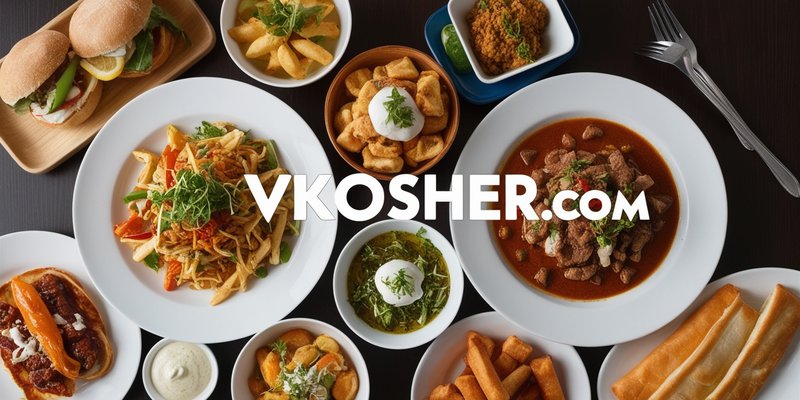Understanding Kosher Lamb: A Comprehensive Guide
Introduction to Kosher Lamb
Kosher lamb is a special category of meat that adheres to specific dietary laws outlined in the Jewish Torah. The term "kosher" itself means "fit" or "proper" in Hebrew, indicating that the meat complies with religious standards for consumption. For lamb to be considered kosher, it must meet rigorous guidelines that ensure both its preparation and slaughter align with Jewish dietary laws. This comprehensive guide delves into the various aspects of kosher lamb, including its historical significance, preparation methods, and its role in modern culinary practices.
Historical Significance of Kosher Lamb
The tradition of consuming kosher lamb dates back thousands of years to ancient Jewish practices. The laws governing kosher meat are rooted in the Torah, the central reference of the religious Judaic tradition. The earliest references to kosher dietary laws can be found in the books of Leviticus and Deuteronomy, where specific animals are deemed clean or unclean for consumption. Lamb, being one of the clean animals, has been a staple in Jewish diets since antiquity.
Historically, lamb was a key feature in many significant Jewish rituals and festivals. One of the most prominent examples is the Passover Seder, where lamb plays a central role. The Paschal lamb, or "Korban Pesach," was sacrificed in the Temple in Jerusalem during the Passover festival. The lamb's blood was used to mark the doorposts of Jewish homes, a sign that would spare them from the plague of the firstborn, as recounted in the Book of Exodus.
The Laws of Kashrut and Lamb
The laws of Kashrut, or Jewish dietary laws, dictate how kosher lamb should be handled from the moment of slaughter to the final preparation. These laws are meticulously detailed, encompassing several aspects including the method of slaughter, the removal of forbidden fats, and the prohibition of blood consumption.
The first step in ensuring lamb is kosher is proper slaughtering, known as "shechita." This method involves a swift, precise cut to the animal’s throat with a sharp knife, performed by a trained individual known as a "shochet." The procedure must be quick and humane, ensuring minimal suffering for the animal. After slaughter, the lamb undergoes a thorough examination for any signs of disease, which would render it non-kosher.
Following slaughter, the lamb must be properly prepared according to Jewish law. This involves removing certain fats and veins from the meat, a process known as "nikkur" or "treibering." Additionally, kosher meat must be salted to remove any residual blood, which is prohibited in kosher dietary laws. The salting process is a crucial step, as it ensures that the meat complies with the Torah’s commandments.
Preparation and Cooking of Kosher Lamb
Preparing kosher lamb involves adhering to specific culinary practices that respect its religious guidelines. The meat should be handled with care to avoid cross-contamination with non-kosher foods. Special utensils, cutting boards, and cookware designated for kosher use should be employed to maintain the integrity of the meat.
When it comes to cooking kosher lamb, traditional recipes and methods are often favored. Many Jewish families continue to prepare lamb using age-old recipes passed down through generations. Roasting, braising, and stewing are common methods, each enhancing the natural flavors of the lamb while preserving its kosher status.
One of the most celebrated dishes featuring kosher lamb is the roasted lamb leg, often served during Passover or other Jewish festivals. This dish is typically marinated with a mixture of herbs and spices, then slow-roasted to achieve a tender, flavorful result. The use of kosher salt and adherence to specific preparation techniques ensures that the dish meets all religious requirements.
Kosher Lamb in Modern Cuisine
In contemporary culinary practices, kosher lamb continues to hold a significant place. With the increasing awareness and appreciation of kosher dietary laws, many chefs and home cooks are exploring innovative ways to incorporate kosher lamb into modern dishes. This includes adapting traditional recipes to contemporary tastes while maintaining adherence to kosher standards.
Gourmet restaurants and specialty food markets often feature kosher lamb on their menus, catering to both Jewish and non-Jewish customers interested in exploring kosher cuisine. The versatility of lamb allows it to be featured in a wide range of dishes, from classic roasts to exotic stews and kebabs.
Additionally, kosher lamb has gained recognition for its quality and flavor. The specific methods of slaughter and preparation contribute to the meat's distinct taste and texture, making it a sought-after ingredient in both traditional and modern culinary contexts.
The Ethical and Environmental Aspects of Kosher Lamb
The ethical considerations of kosher lamb extend beyond its religious significance. The principles of shechita emphasize the humane treatment of animals, ensuring that the slaughter process is as painless and respectful as possible. This approach reflects a broader commitment to ethical eating practices.
Moreover, the kosher meat industry is increasingly focused on sustainable and environmentally friendly practices. Efforts to reduce waste, improve animal welfare, and adopt eco-friendly farming techniques are becoming more prevalent. By supporting these practices, consumers contribute to a more ethical and sustainable food system.
Conclusion
Kosher lamb represents a rich tapestry of tradition, faith, and culinary excellence. Its journey from ancient religious practices to contemporary kitchens highlights its enduring significance in Jewish culture and beyond. Whether enjoyed as part of a festive meal or incorporated into modern recipes, kosher lamb continues to be a cherished and versatile ingredient. Understanding its history, preparation, and ethical considerations enriches our appreciation of this remarkable meat, ensuring that it remains a symbol of both tradition and innovation in the culinary world.




